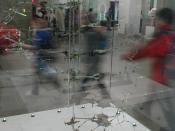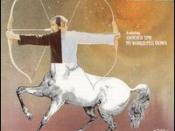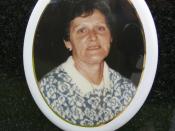Justin Wickett
5/25/2004
Swift's Recursive Novel: A Mosaic of Histories and Patterns
Throughout history, repeating patterns can be seen and analyzed. This idea of history repeating itself is essential in the novel Waterland, where Graham Swift shifts back and forth between different time periods to help Tom Crick's students understand history through their own personal experiences and relationships and through Crick's own personal and ancestral history. While Tom Crick repeats his personal history to his class, Swift repeats certain patterns in the novel while using the recursive style of writing. By interweaving patterns between history lessons and childhood memories, Swift uses Waterland as an essential recursive styled novel incorporating key ideas about history such as learning from the past and trying to not repeat the misdoings, appreciating the past, and recognizing that history builds every second and carries significant meanings.
As the novel starts off, Swift uses a pattern that shifts back and forth between the present tense, a period of time where Tom Crick teaches his class about history, and the past tense, where Tom Crick describes the Fens and other history along with his childhood.
When Swift uses the recursive structure of his novel to create patterns to move in and out of, Tom Crick's students are able to learn the essentials of history and how it plays a role in everyone's lives by comparing the present to the past and questioning it. In order to teach his readers not to repeat the misdoings in history, Swift makes an example of Crick's life and shows to the reader how a simple mistake such as premarital sex led to confusion and hardships in the present. Swift's use of patterns from his recursive style of writing and history lessons taught by Crick allow Swift to get his...


